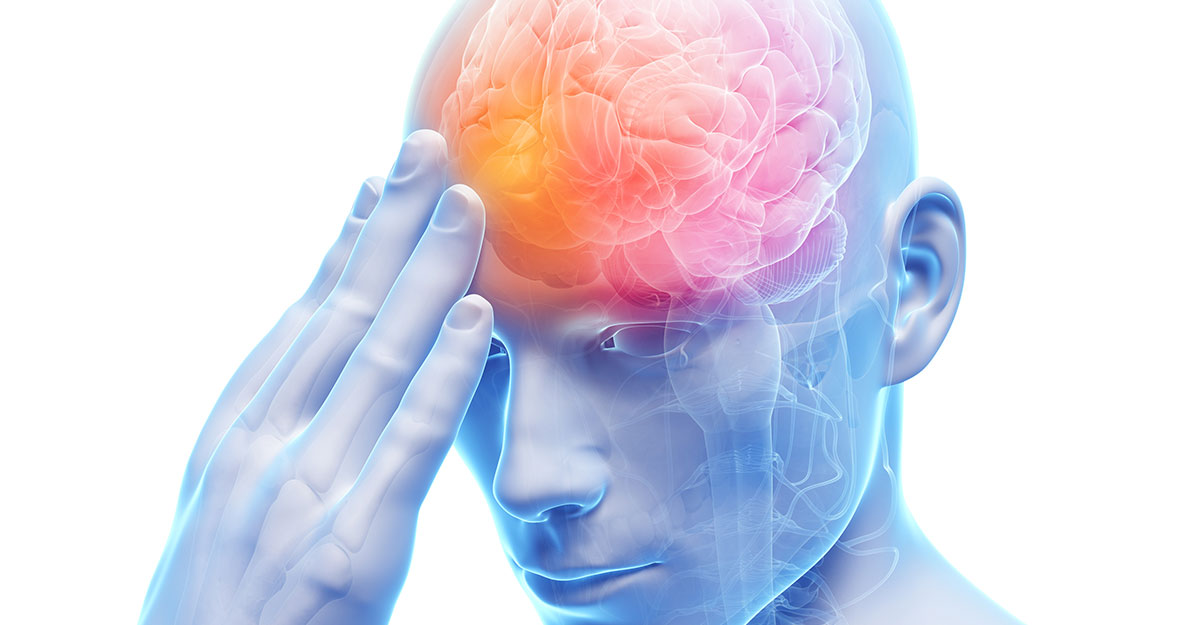Headaches

- During the past year, nearly 90% of men and 95% of women have had at least one headache.
- Migraine headaches afflict 25 to 30 million people in the United States alone.
- Tension type headaches are the most common, affecting more than 75% of all headache sufferers.
- Number of Days of Lost Production/Restricted Activity Per Year:
- Employed Males – 2.7 million days Employed Females – 18.8 million days Housewives – 38.5 million days
Kids & Headaches
- 20% of adults report the onset of headaches prior to age ten.
- American children ages 5-17 missed 4.2 million days of school last year complaining of headaches.
- Many migraine patients experienced their first headache before age seven.
Though there are many types of headaches, a frequent and overlooked cause of headaches is the malfunction of spinal bones in the neck and upper back. When bones of the spine lose their normal position or motion, sensitive nerves and blood vessels to the head can be affected. When spinal nerves and related tissues are stretched or irritated, they can produce throbbing headaches. Aspirin and medications may cover up these warning signs, but do not correct the underlying structural cause. Many people find relief and correction with chiropractic care.
If a thorough examination reveals reduced range of motion, loss of normal spine curves, or mechanical restrictions, chiropractic care should be considered. After a complete explanation, you’ll receive a care program designed for your unique spinal problem.
Many patients report headache relief. Others find that the correction takes longer because their spinal problem has existed undetected for many years. Every patient responds differently. Regardless of how you respond, experience the drug-free results millions have enjoyed by consulting a chiropractic doctor. Get started today.
Call Your Chiropractor If:
- You have pain behind your eyes.
- You have pain that makes you dizzy.
- You have pain in your temples.
- You have pain in the back of your head on one or both sides.
- You have pain that goes down the back of your neck into the tops of your shoulders.
- You have a constant spasm in your shoulders that radiates up into your neck.
- You have a headache that persists for three or more days.
- Your child complains of a headache that lasts for more than one hour.
First Aid for Headaches
Drink half your body weight in ounces of pure water every day.
Example: A 150 lb. person needs to drink 75oz. of water per day.
Ice is a topical anti-inflammatory that reduces swelling and pain. Apply ice to the back of the neck for 15 minutes and remove for 45 minutes. Repeat as often as necessary. If the headache persists for more than 24 hours, call your chiropractor for an evaluation.
Minimize Headache Frequency
SLEEP SCHEDULE
Waking and sleeping times can play a critical role in controlling headaches. Sleep deprivation is a common headache trigger, as is oversleeping. Make an effort to normalize your sleep patterns helping your body to become regulated.
STRESS
Though it’s almost impossible to eliminate stress from a fast-paced, high-pressure lifestyle, try to implement techniques that will help minimize its impact on your life. Take deep breaths, meditate, pray and keep a sense of humor. Be sure to exercise regularly, lower the unreasonable demands you put on yourself and leave work on time so you can spend leisure time with your family and friends.
DIET
Most offending foods and seasonings will cause headaches shortly after you eat them. Some foods will only cause headaches if you eat a certain quantity. For example, nitrates in a hot dog may not bother you until you’ve had your second one. Reduce your intake of caffeine, chocolate, nitrates (preserved meats), fermented foods, alcohol, and foods that contain MSG and artificial sweeteners.
MEALTIMES
Skipped meals or irregular eating schedules can increase headaches. If this appears to be a cause, try to eat meals at regular intervals or carry snacks with you so you can eat when your body requires food.
SMOKING
Smoking cigarettes or breathing second hand smoke can increase your headache frequency. Although quitting smoking is not a guarantee that headaches will stop, it can ease the problem by eliminating the impieties and the carbon monoxide levels found in the blood of smokers.
Dr. Steven Pierce specializes in the treatment of patients with headaches. He has successfully treated patients with this condition for 29 years. If you would like further information about headaches or to schedule a consultation, please contact the office. We are looking forward to helping you in the future.